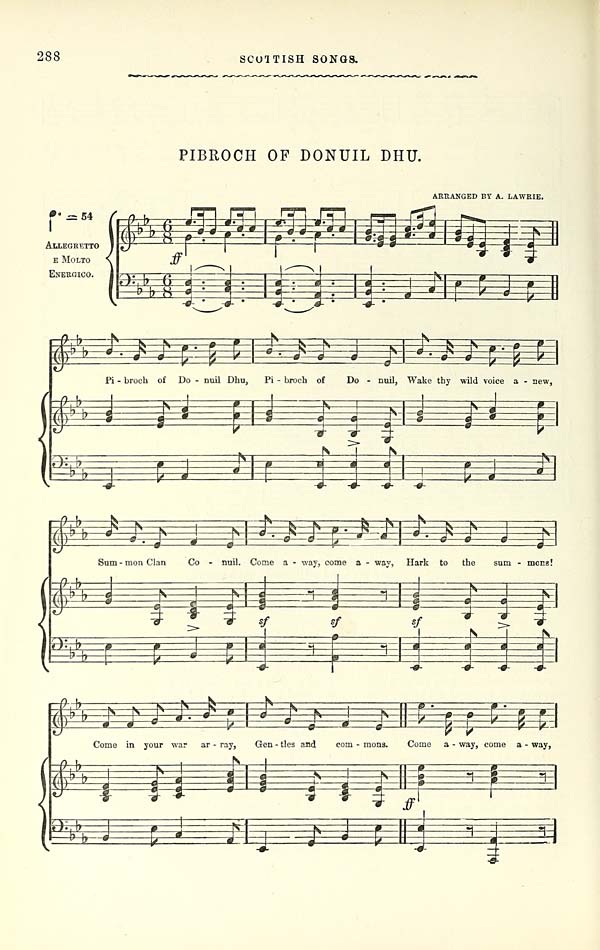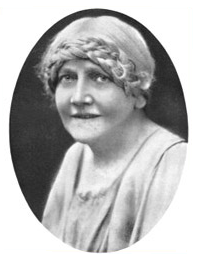
Songs and collectors
The Gaels are a people with a tradition steeped in music. With poetry and balladry being at the heart of Gaelic tradition, there have always been strong links between sung and instrumental repertories (musical outputs) particular in the bagpipe, fiddle and harp. Unfortunately, very few sources of songs with music have survived as originally these were shared and passed down within a wholly oral tradition.
Types or classes of Gaelic song
As with many other folk traditions, songs have been part of the everyday life of the Gael and as such they can be classed into categories including:
- working or labour songs (including those related to the crofting tradition such as waulking the cloth, spinning, milking, churning, reaping, rowing, and lullabies)
- love songs
- fairy songs
- mourning and funeral songs (the coronach)
- pibroch songs
- puirt-à-beul (mouth music)
Songs often tell stories, legends or recall historical events. There are also heroic ballads which include, for example, Ossianic ballads.

The most common surviving labour song type is the waulking song. This is typically sung by women sitting at a table moving the cloth with a rhythmic thumping. An early example of a waulking song is ‘A’ Bhirlinn Bharrach’ (The Barra galley)/Beinn a’ Cheathaich (The misty mountain)’.
The song tells the story of watching a boat sail by Kisimul Castle at Castlebay. The verse and first line of the refrain are sung by the leader with the remainder of the refrain sung by the rest of the group, the chorus. The accents of the thumping coincides with the accents of the music. This particular song was also collected and arranged by Marjory Kennedy-Fraser using the title ‘Kishmul’s Galley’.
Modern sources for this song are:
- ‘The traditional and national music of Scotland’ by Francis Collinson Library shelfmark: Mus.Rm.4
- ‘Songs remembered in exile’ by John Lorne Campbell. Library shelfmarks: Mus.L.m.60; N3.87.2161L
- ‘Songs of Gaelic Scotland’ by Anne Lorne Gillies. Library shelfmark: P36.11.452/8
Pibroch songs

Pibroch songs are versions of pibroch tunes set to words. It isn’t clear whether pipers used airs for their tunes or whether song writers used the pipe tune to set words. Surviving pibroch songs include those based on existing pipe tunes as well as tunes that may have existed in that form in the past.
A well-known example of a pibroch tune which is also known as a pibroch song and pibroch fiddle tune is the ‘Pibroch of Dhòmhnall Dubh’, (also mentioned in the fiddle page). Here, it is a 19th century published song version in English and somewhat removed from the original tune:
Puirt à beul
Puirt à beul also known as ‘mouth-music’ is a special type of music where the voice replaces an instrument and the words are often nonsensical syllables as the rhythm is more important as this kind of music is related to the dancing repertory.
These are just some of the many Puirt à beul examples from the Tobar an Dualchais website:
- Gheibh Sinn Riobanan Mòra, Mòra/Chunnaic Mi san Dùn Thu/Is Brèagha na Taighean Sglèat (1955)
- Cha tig Fionnlagh a dh'Eige/Thoir a-nall Ailean thugam (1957)
- Dilidh o Iodalam/Fionnlagh ag Inneireadh (1965)
Further examples can also be found in these books:
- ‘The traditional and national music of Scotland’ by Francis Collinson Library shelfmark: Mus.Rm.4
- ‘Songs of Gaelic Scotland’ by Anne Lorne Gillies. Library shelfmark: P36.11.452/8
Notable Scottish song collectors
While Scottish songs have been collected over centuries it wasn’t until the late 19th and early 20th centuries that an interest in collecting original authentic Gaelic songs by means of notated music and sound emerged. The availability of sound recording technology in the 20th century made it possible for collectors to record actual performances and these were more effective in passing on the music in its fullest and most authentic form.
Major collectors include:
Marjory Kenney-Fraser (1857-1930)

Marjory Kennedy Fraser was a Scottish singer, music teacher, composer, collector and arranger of Scottish songs from the Highlands. She visited many of the Western Isles where she collected songs by means of recording the songs with a wax cylinder phonograph. Later she donated her recordings to the School of Scottish Studies Archive at the University of Edinburgh. Her main publications of Hebridean song, with words translated into English by the Rev. Kenneth MacLeod, include ‘Songs of the Hebrides’ published in 1909 (Library shelfmarks: Mus.P.l.25; Mus.P.l.39; Mus.P.l.61; Mus.P.l.62;Mus.38.51L; Mus.38.52L).
Frances Tolmie (1840-1926)

Frances Tolmie was a Scottish folklorist from Skye who published a collection of songs in 1911 titled ‘One hundred and five songs of occupation from the Western Isles of Scotland’ reprinted from the ‘Journal of the Folk-Song Society’ published in 1911. Around 24 songs were reprinted in 'The Old Songs of Skye: Frances Tolmie and Her Circle' by Ethel Bassin.
John Lorne Campbell (1906-1996)
John Lorne Campell was a Scottish folklorist, originally from Argyll, who lived in the Western Isles from the 1930s where he met and married American musician Margaret Fay Shaw. They bought the island of Canna and lived in Canna House for 40 years. Together they collected and recorded numerous traditional songs amassing a large archive of Scottish Gaelic song and poetry, including manuscripts, sound recordings, photographs and film. Between 1969 and 1981 J. L. Campbell published a three-volume collection of Hebridean folk-songs.
The Campbell archive at Canna House is now in the possession of the National Trust for Scotland and the recordings have been digitised as part of the Tobar an Dualchais project.